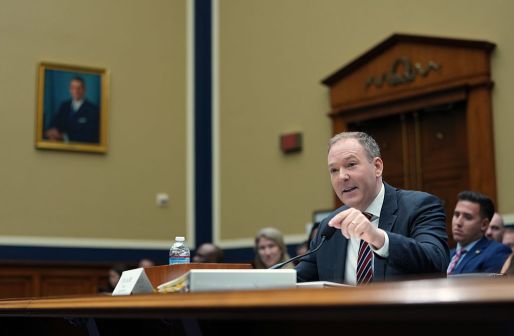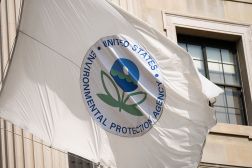DOGE went ‘slash and burn’ on EPA grants. Scientists fear ‘grave’ impacts
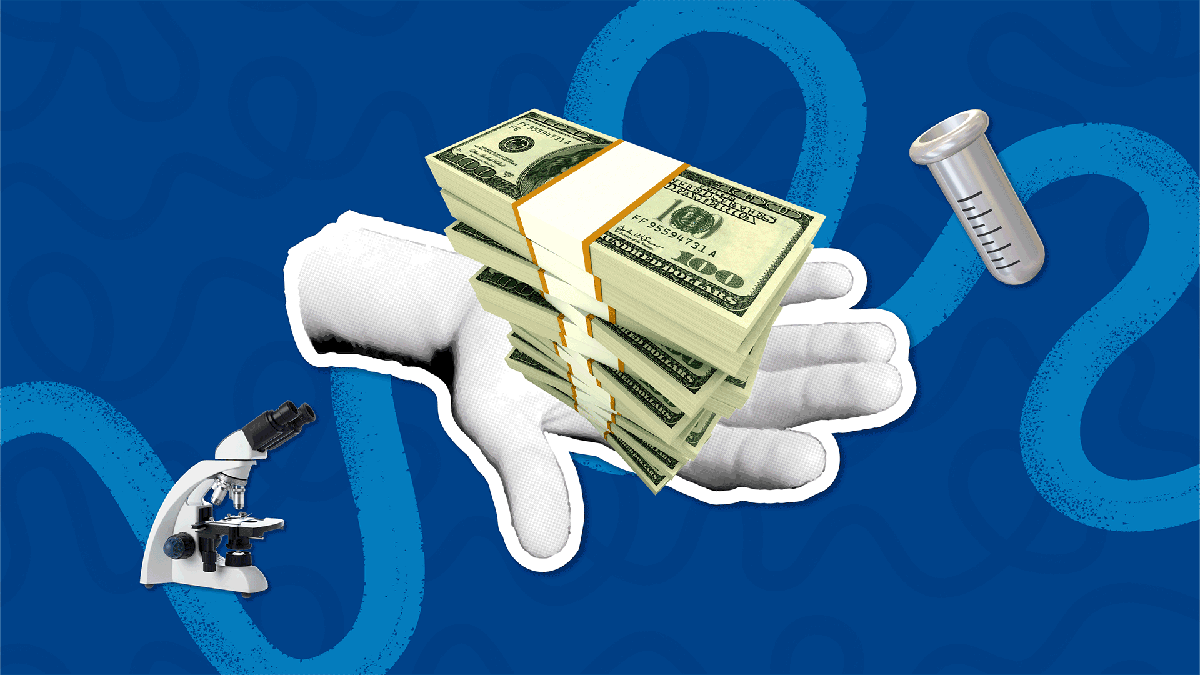
When the Environmental Protection Agency, during the first Trump administration, put the word out to scientists that it was looking for alternatives to chemical testing in animals, researchers at Texas A&M answered the call.
Ivan Rusyn and Weihsueh Chiu, professors in the university’s College of Veterinary Medicine & Biomedical Sciences, were awarded an EPA Science to Achieve Results (STAR) grant in August 2020. With nearly $800,000 in government funding secured, the researchers dove into their work on improving “in vitro-to-in vivo extrapolation” methods.
“What we’re trying to do,” Chiu explained, “is develop complex systems where we can test these chemicals in the lab, and then also use computer models to predict what type of chemicals are safer and can be used in our economy, and which ones we should avoid using.”
Five years later, the second Trump administration insists it’s as committed as ever to ending experiments on animals — but the innovative toxicology work happening at Texas A&M was abruptly halted in May, one of hundreds of EPA grants cut short by the so-called Department of Government Efficiency.
The cancellation was especially confounding to Rusyn, a toxicologist focused on developing cell-based models to speed up drug and chemical safety evaluations. DOGE’s decision to eliminate Texas A&M’s grant, he said, was “unfortunate and indiscriminate.”
“In our opinion,” Rusyn continued, it’s the “termination of an award that was and is and remains quite responsive to the current interests of the first Trump administration — and the second Trump administration.”
In announcing Lee Zeldin as his pick to lead the EPA nearly a year ago, President Donald Trump pledged that the agency would maintain “the highest environmental standards, including the cleanest air and water on the planet.” Zeldin, a former Republican congressman from New York, has since touted the agency’s “pro-environmental actions” in “providing clean air, land, and water for all Americans.”
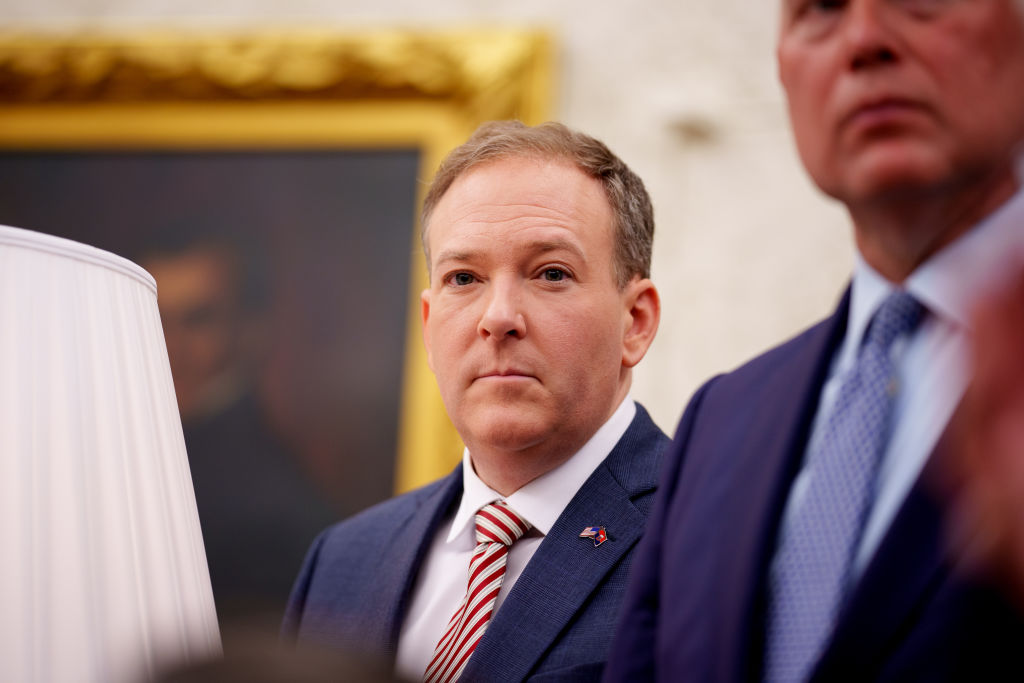
But EPA-funded grants scrapped by DOGE include projects to improve air-quality monitoring near a refinery notorious for emitting pollutants, examine the impact of fireworks’ chemical concentrations in drinking water, develop predictive models to forecast future pandemics through the surveillance of rural wastewater sources, and myriad others whose cancellations seemingly undercut the Trump administration’s supposed environmental priorities.
Many of those grants appear to have been dropped simply due to the fact that phrases like “environmental justice” or “equity” were used in the applications. The EPA said in response to a request for comment that it has canceled “at least $29 billion in wasteful spending” and saved “more than $2 billion taxpayer dollars” through its work with DOGE, while fulfilling its “core mission of protecting human health and the environment.”
In interviews with FedScoop, recipients of now-rescinded EPA grants mourned their projects and the lost opportunities to address real environmental challenges. They also warned of a slippery slope that comes with drastic cuts to science and technology.
The EPA has “very little interest in science being at the forefront of the policy” it’s charged with administering, Rusyn said. “There could be a discussion as to what type of research is needed. … But it seems to be, again, a very indiscriminate slash and burn, and the consequences of that are going to be grave and felt widely.”
Efficiency projects not spared by DOGE
One of the most frustrating aspects for scientists on the receiving end of the EPA’s grant cuts is that they were made by DOGE, supposedly in the name of efficiency. For Carrie McDonough, an associate professor of chemistry at Carnegie Mellon, that reasoning was more than a bit “demoralizing.”
McDonough was drawn to the powerhouse research university in Pittsburgh three years ago by the promise of creating a lab centered around the study of how environmental pollutants interact with biological systems. CMU’s prestigious computer science program only sweetened the pot, offering her the chance to work with some of the country’s brightest minds in computational chemistry.
The Carnegie Mellon team jumped at the chance to apply for the same type of STAR grant that was awarded to Rusyn and Chiu at Texas A&M, and in the final months of the Biden administration, they got the good news: $1.5 million in funding to develop a “predicted reaction network” that used experimental and computational data to assess the environmental lifecycle of certain chemicals.
In layman’s terms, McDonough and her team were attempting to accelerate the chemical testing process undertaken by the EPA.
“Bureaucracy and safety assessments that are done by the EPA take forever, and the EPA doesn’t like that either,” McDonough said. “No one likes how long those things take.”
Creating a model that attempted to address that problem would seem to be right up DOGE’s alley: a more efficient way to test synthetic substances, using machine learning to analyze data and predict outputs to ensure harmful chemicals aren’t used and safe ones can be utilized faster. The environmental section of the White House’s Make America Healthy Again report, McDonough noted, essentially described the kind of work Carnegie Mellon researchers were doing.
“What we want to do is have more independent safety assessments not done by the companies,” she said. “And we want to be more rapid, and we want to involve computational prediction, machine learning and safety assessments — exactly what the grant is. Yeah, that was frustrating.”
The Texas A&M researchers felt that way, too — why scrap work intended to create better models for testing chemicals when everyone agrees that current methods used by toxicologists are “not the most efficient?” Rusyn wondered.
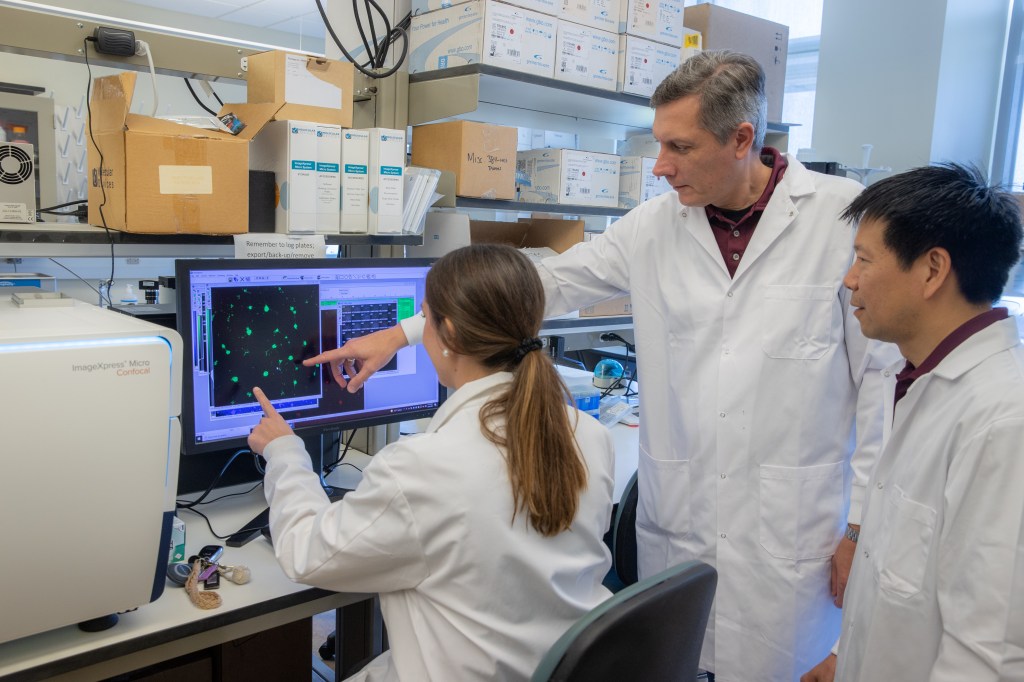
“We need better models,” he continued, and “we were designing exactly that type of a system to increase public health protection. Unfortunately, the current administration has decided that no grant from EPA at all could be funded, and things got cut that otherwise are quite in line with the administration’s priorities and common sense and the scientific progress in this area.”
Innovation halted, public health ignored
Not every EPA grant canceled by DOGE had an obvious efficiency component to it, but there were plenty featuring the kind of cutting-edge science the Trump administration has paid lip service to.
Scientists working on the Carnegie Mellon and Texas A&M projects leaned heavily into predictive tools and models. So, too, did a team of University of Illinois researchers who in 2022 were awarded a $1 million EPA grant to improve wastewater monitoring in rural areas, a project aimed at more quickly detecting infectious diseases and other potentially dangerous pathogens.
Helen Nguyen, an environmental engineering professor at Illinois and principal investigator of the study, said the COVID-19 pandemic demonstrated the value of wastewater monitoring and revealed current systems’ shortcomings — particularly in overlooking wide swaths of the country.
“When you have the next pandemic — which will come and we need to deploy wastewater treatment to monitor the pandemic — how do we do it with the communities that are not connected to centralized wastewater treatment?” Nguyen said. “We know how to do it for Chicago, Boston, whatever, everyone else, OK? But we have rural communities. … How do we monitor that?”
The Illinois team aimed to answer that question by developing a system to analyze various datasets covering rural areas — weather, population density, civil infrastructure, “social dimensions,” etc. — and then forecast where the transmission of infectious diseases would be most likely to occur.
The predictive nature of that modeling paired with on-site wastewater sampling, Nyugen said, would have served to inform “underfunded” and “low-resource” areas of looming trouble. In awarding the grant three years ago, an EPA administrator said: “Protecting public health is one of [the agency’s] highest priorities.” And now?
“The current administration doesn’t seem to care at all about infectious disease anyway,” said Nguyen, whose project was stopped at about its halfway point.
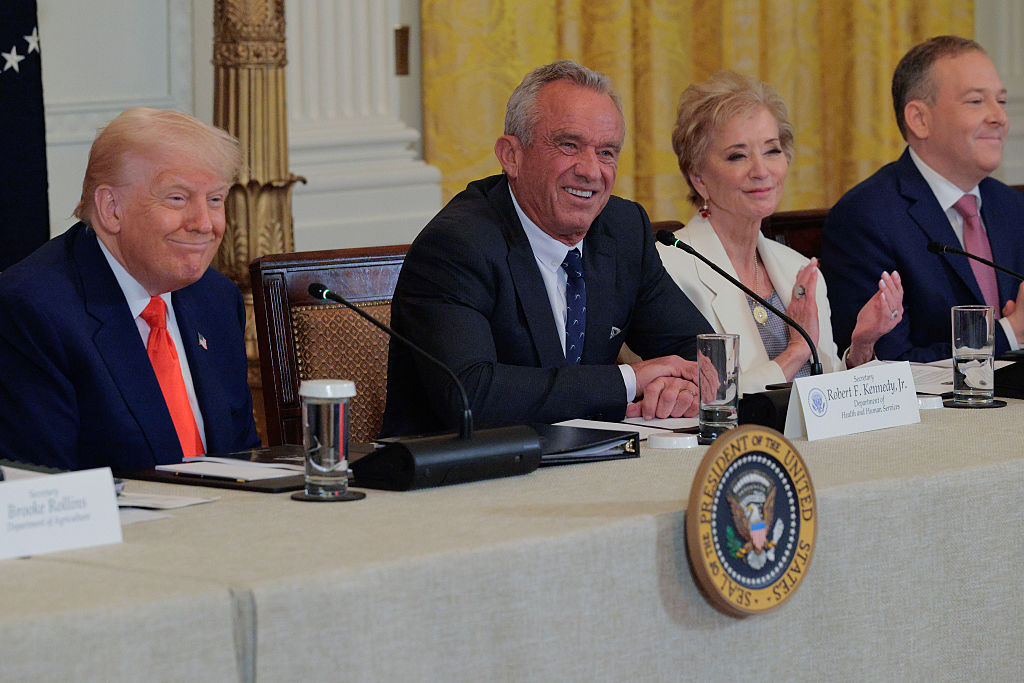
The ability to effectively fight illnesses was a priority for the Biden EPA, which in September 2024 awarded $9 million to four institutions to research antimicrobial resistance, or AMR. According to a 2022 study in The Lancet, bacterial AMR was responsible for 1.27 million deaths worldwide in 2019, and the World Health Organization has increasingly sounded the alarm over widespread resistance to common antibiotics.
The University of Wisconsin-Milwaukee was one of those four institutions tasked by the EPA with studying the AMR problem, getting $2 million to examine wastewater systems for answers.
Ryan Newton, an associate professor in UWM’s School of Freshwater Sciences and the lead investigator of that grant, said wastewater was a logical place to look given that “human pathogens come into contact with a lot of other organisms, so conditions may be right for … [the] transfer of antibiotic resistance.”
The innovative techniques Newton and his colleagues planned to use before the grant was terminated by DOGE in April included targeted metagenomics, a DNA sequencing method to analyze gene variants present in wastewater systems. That analysis would be compared to existing clinical variants, with Milwaukee-area facilities providing researchers with resistant organisms they were encountering.
But like Nguyen at Illinois, Newton and his UWM team were sent a form letter from the EPA telling them that their grant “didn’t fit into the agency’s mission anymore,” leaving the country without a nationwide assessment of AMR in wastewater treatment systems.
“We won’t understand — in that sort of big picture sense — what the human health risk is from our wastewater treatment processes,” Newton said. Canceling the grant will ultimately delay the ability to “engineer new wastewater technologies to slow down that spread of resistance or dissemination of resistance in the environment.”
Clean air, water projects ditched by DOGE
While the Illinois and UWM grants were particularly attuned to environmental conditions lurking beneath the surface, others eliminated by DOGE were trained on those classic EPA metrics that Trump and Zeldin assured the public would be better than ever in this administration: clean air and water.
Researchers at Texas Tech, for example, landed a $2.5 million STAR grant to study the potential impact of perchlorate concentrations from fireworks on drinking water. A chemical also used in explosives and signal flares, perchlorate can cause poor health outcomes if ingested, including disruptions to thyroid functions.
The problem is exacerbated by the fact that so many fireworks shows take place over large bodies of water, many of which are used as sources for drinking water, according to Andrew Jackson, an environmental engineering professor and chair of Texas Tech’s Department of Civil, Environmental, and Construction Engineering.
Scientists know that low concentrations of perchlorate can lead to poor health effects, but Texas Tech and its partner institutions on the grant were working to better “understand if enough perchlorate really gets into lakes and rivers to cause a problem, and if so, how often and under what conditions,” Jackson said in an email.
Two years into the project, data collection suggested “widespread impact” from public and event-based use of fireworks. Perchlorate concentrations in deposition — where particles settle at the bottom of a body of water — increased by two orders of magnitude on the Fourth of July compared to before the holiday.
Staggering as those early findings may have been, the research was immediately halted in May with DOGE’s cancellation of the grant, preventing Texas Tech and its partners from collecting enough data to more definitively evaluate risk, create models to predict impacts, build tools for public water systems to lessen risk and several other mitigating measures.
“The country will not know if its public water is impacted by perchlorate after these fireworks events,” Jackson said. “Basically, they will not know if the water is safe to drink.”
In Delaware, meanwhile, the Clean Air Council has long been concerned about whether the air is safe to breathe in the surrounding areas of an oil refinery in New Castle County. The Delaware City Refinery has been cited multiple times in the past year for excessive emissions and has a long history of releasing sulfur dioxide, carbon monoxide and other pollutants into the air.
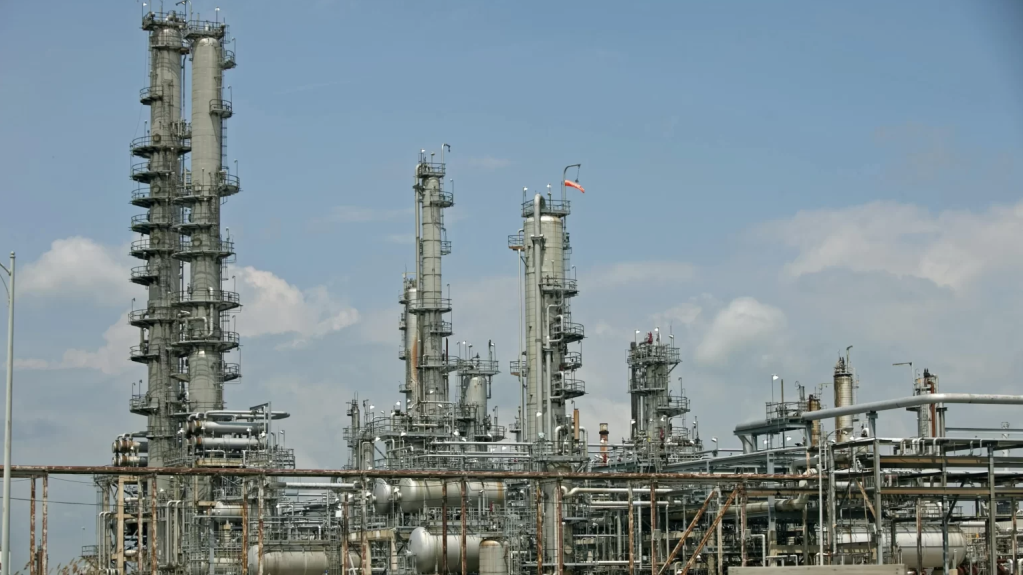
Last year, the Clean Air Council received a $490,000 EPA grant to institute real-time air monitoring of the facility, which has unleashed “a constant source of toxic air pollution” on the nearby communities, said Alex Bomstein, executive director of the nonprofit. Although different air-monitoring networks have been put in place, there’s only so much that some of that technology can do.
“You can’t sense carbon monoxide, for example, just by smelling it, you know. It’s odorless,” Bomstein said. “There’s lots of different types of air pollution where it would be really helpful to have actual sensors knowing what there is there and where it is.”
Under current conditions, it may take the EPA and the Delaware City Refinery more than a year to post its fenceline monitoring online, according to Russell Zerbo, federal advocacy coordinator at the Clean Air Council. The innovative advantage of their EPA project was to shift monitoring to real-time.
“The goal is to inform residents of pollution incidents in the moment, so people can try to avoid the area and we can get the refinery to fix the problem,” Zerbo said in an email, noting that CAC had partnered with an air-monitoring company and a new website would have pulled in the real-time data. “And then more long-term data analysis should give us solid information about pollution incidents at the refinery.”
DOGE scrapped the Clean Air Council’s grant in March, a move Bomstein called “astonishing” given that the decision essentially amounted to the EPA saying “we don’t care about” the people “living near a highly polluting facility that is degrading their quality of life.”
There is a glimmer of hope for those refinery-adjacent people: Since the grant’s termination, the Clean Air Council has been in discussions with the state of Delaware on funding and planning for the air-monitoring project, though details haven’t been finalized.
If the state does come through and the project goes forward, the Clean Air Council will be a notable outlier — the vast majority of organizations whose EPA-funded research was shut down have been left waiting to wonder if they’ll ever get the chance to pick their work up again.
What will be lost
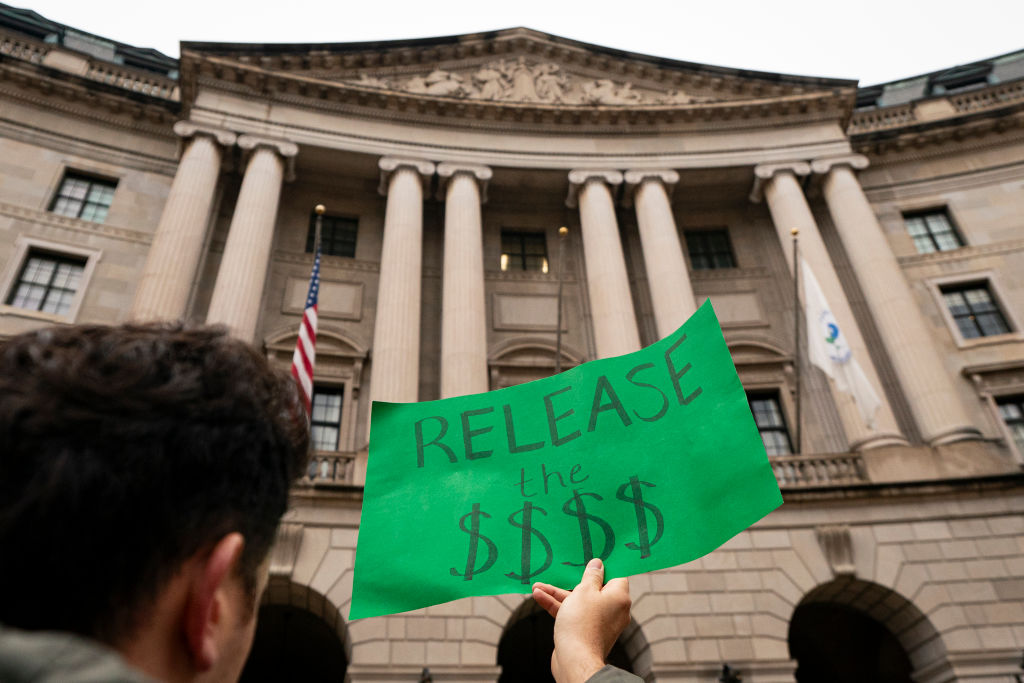
For universities whose EPA grants were canceled, the initial notice from DOGE kicked off a mad dash to find new work for researchers. At Wisconsin-Milwaukee, one graduate student under Newton was forced to pause their master’s degree before returning and paying out of pocket — something the university typically doesn’t allow “because it’s just not good for students,” the professor said.
“Unlike some of the other universities, like Northwestern or Harvard or Michigan, UWM doesn’t have quite the endowment or deep pockets to where the university can support those students,” he added.
The loss of funding at Texas A&M didn’t lead to anyone losing their jobs, but Rusyn said the canceled grant triggered significant administrative burden on everyone involved, from human resources staffers to university lawyers. It also sent a very troubling message to the scientists and researchers doing the work.
“Anxiety created by this type of a situation is just not something that we’ve experienced in our decades of academic research,” he said. We were all “working to make American science great, period.”
With so many graduate students left to fight for funding scraps in the Trump era, researchers worry that the cuts will dry up the pipeline of young talent, ultimately depriving the country of potential scientific breakthroughs. It’s an existential crisis that these researchers grapple with daily.
At Carnegie Mellon, McDonough worries that some peers don’t recognize that the administration’s attacks on “knowledge-generating institutions” are a bigger threat to science and research than “just losing some grants.”
“This is an attack on our ability to tell what’s true and what’s not, which is terrifying, and people need to take that really seriously,” she said.
Nguyen, the Illinois environmental engineering professor, doesn’t believe that the government’s changes will be permanent and the “pendulum” will swing back. But as someone who grew up in Vietnam and studied in the former Soviet Union, she’s already seen a backsliding in American universities’ ability to recruit the best scientists in the world. “We used to be at the frontier,” she said, “and it’s probably moving to another country now.”
A massive part of foreign-born scientists’ shift away from the U.S. is the Trump administration’s extreme immigration policies, but Nguyen believes there’s another factor at play: areas of technological innovation not being “valued” here anymore, with the EPA grant cuts just one example.
“It takes a long time to do something, and then, just by a stroke of someone’s pen, that’s it. And we stop it,” she said. “I don’t know how we are gonna recover from it.”
